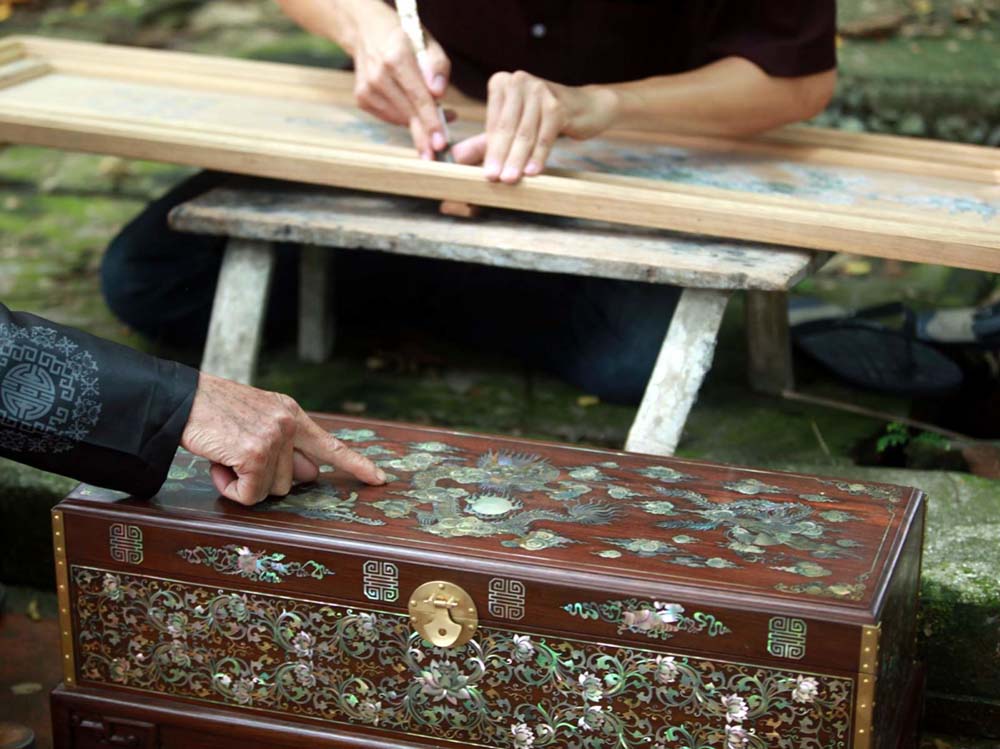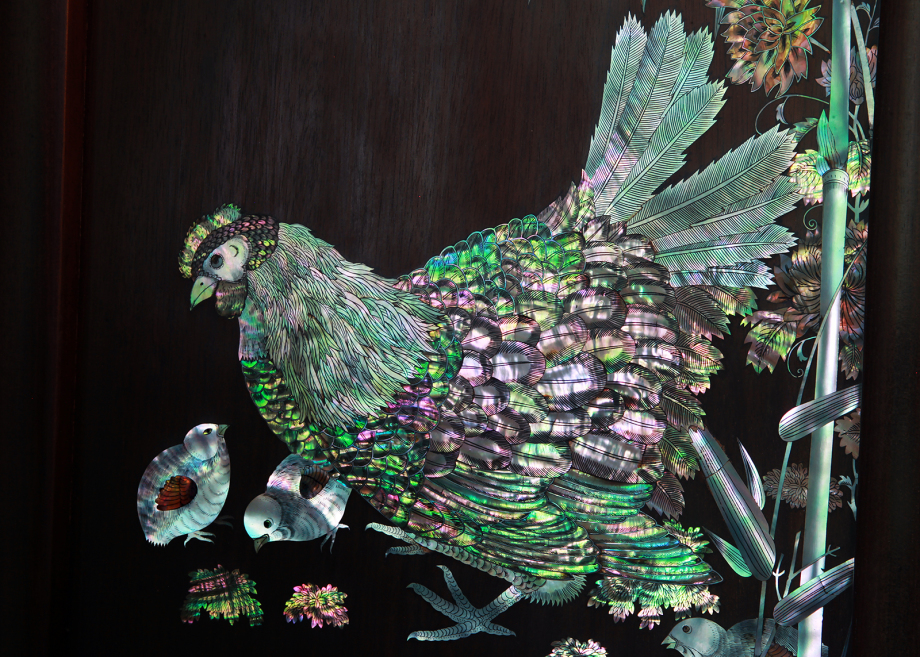
The light sea snails are cut into small, straight pieces, ironed, cut, filed and then assembled into detailed skull motifs.

Chuon Ngo village in Chuyen My commune, Phu Xuyen district, Hanoi is one of the famous craft villages for mother-of-pearl inlay. Coming to the village, you will feel the atmosphere of a rapidly developing craft village.

Common mosaic materials are taken from clams and snails. First, the worker cuts the snail along the three prominent ribs of the snail bone, removes the outer and inner layers, takes the pure layer in the middle, then grinds it smooth and flattens it, then uses a hot iron to flatten it.
The mother-of-pearl inlay worker uses pieces of pearl shell to inlay (attach) onto objects. The steps need to be done quite meticulously. First, you have to draw a painting pattern, then use a specialized saw to cut the snail piece according to a predetermined pattern.
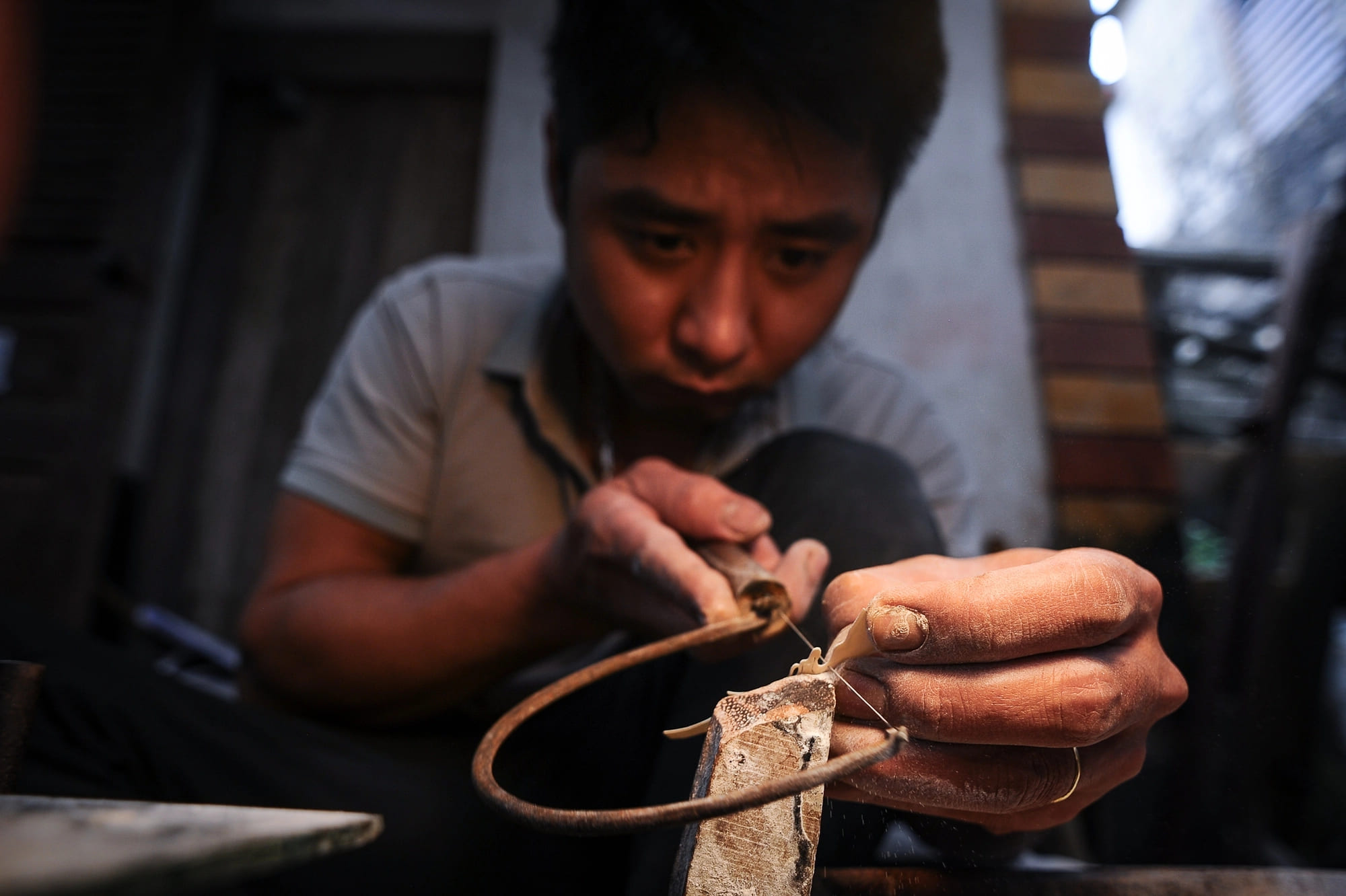
The water wave detail has just been cut and filed. To cut and file small and delicate details like this requires good skills and high concentration from the worker.

The cut details are temporarily embossed like a finished painting on wood. The craftsman will use a pencil to draw the outline of temporarily attached details on the wooden surface. The carver will then carve a concave into the wood after removing the shell. The concave carved part will be glued and then the shell details will be attached so that they are flush with the flat wooden surface.
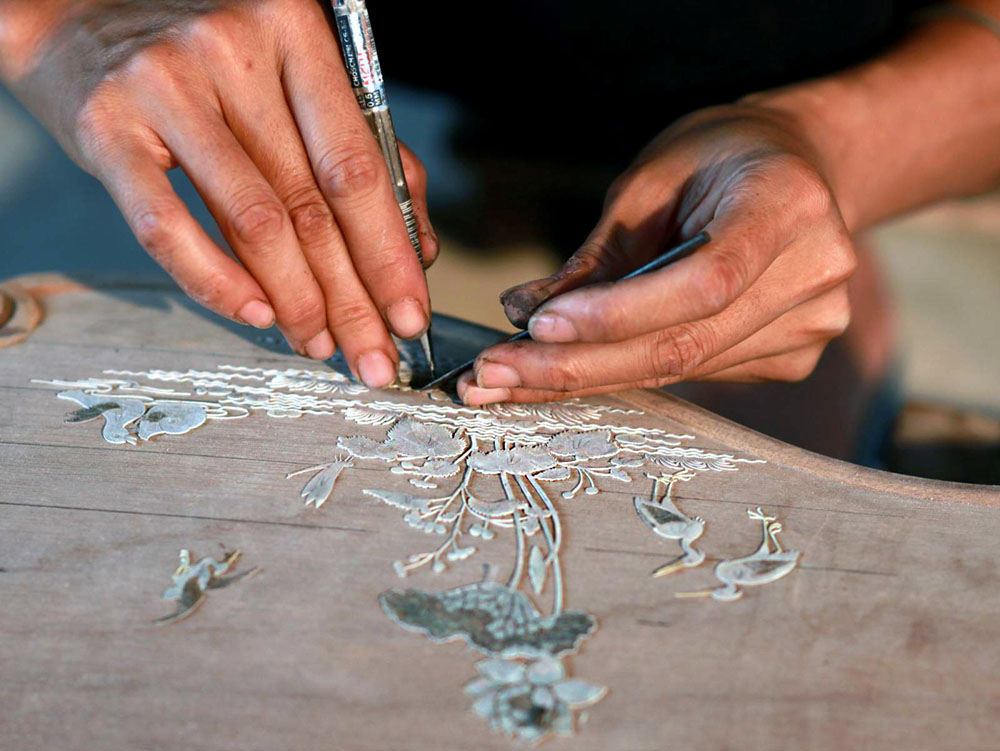
The craftsman uses two knives to apply glue on the concave wooden surface, then press down the pieces of pearl that have been cut into negative shapes. The wood chosen for the surface of the painting is mahogany. This type of wood, when polished, will have a deep brown color that blends well with the color of oysters and snails. After the shell is attached to the wooden surface, it is time to trim the details with a specialized knife.
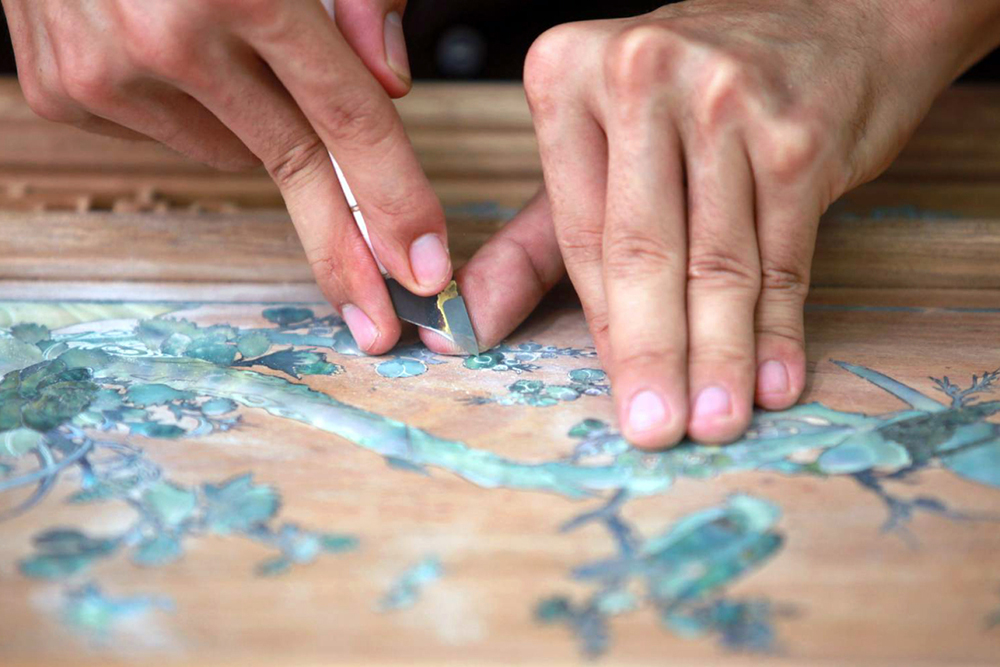
The highlight of Chuon Ngo mother-of-pearl mosaics is that the pieces of mother-of-pearl are unbreakable, always flat, and chiseled into the wood very tightly. The decorative details on the mother-of-pearl mosaic are very vivid and unique. Pieces of inanimate pearls, through skillful hands and rich creativity, are attached to wood to become products with high cultural and artistic value.
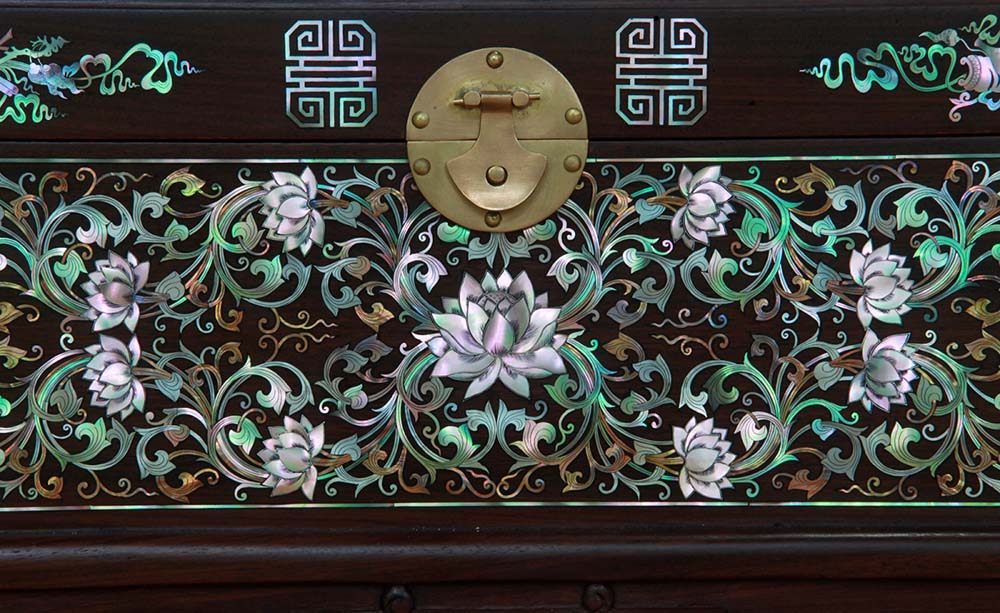
Match cut details to drawings.
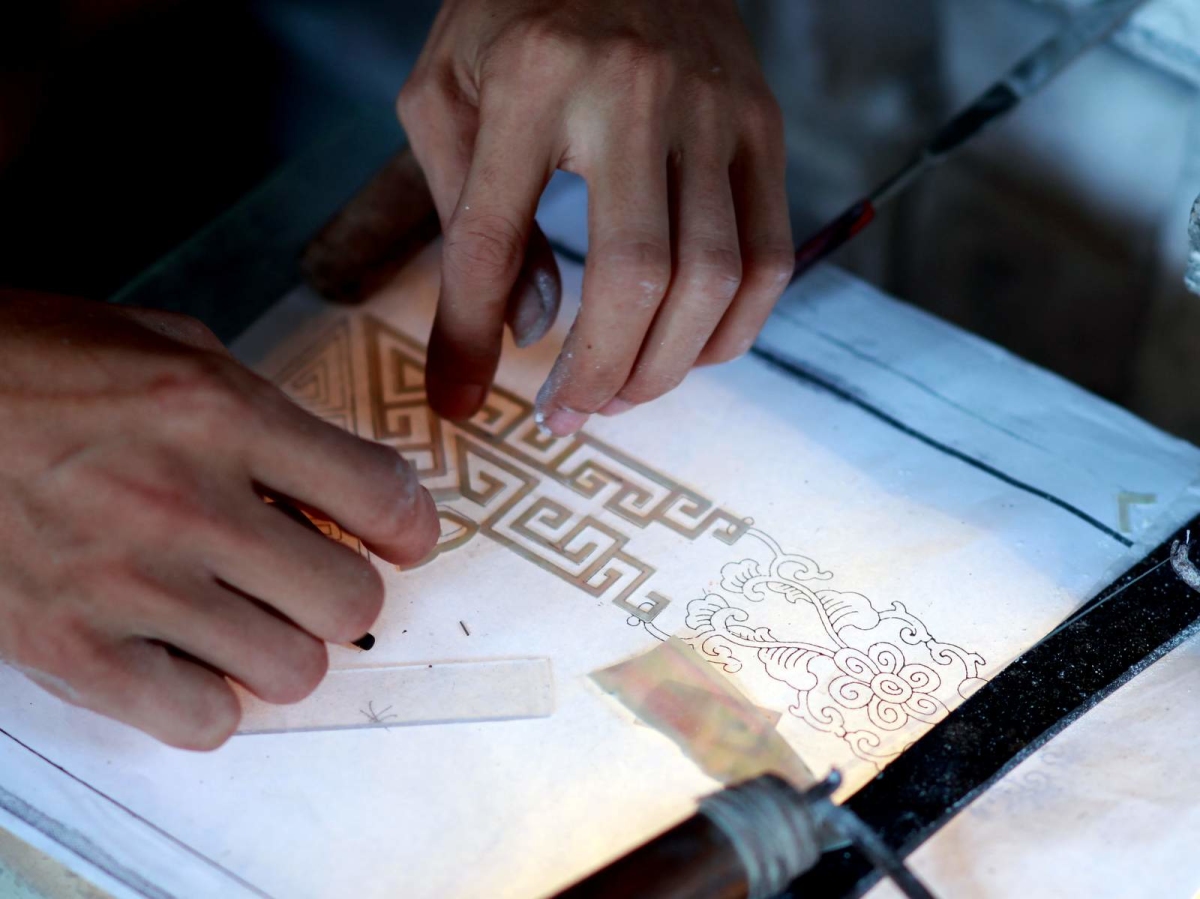
The image of a phoenix, one of the four sacred spirits.

The temple worships the founder of the craft village, Truong Cong Thanh. History books also record that Mr. Truong once served as Deputy General to Ly Thuong Kiet. After defeating the enemy, he resigned from the mandarin to travel around the mountains and water. When he discovered pieces of mussel shells, snails, and oysters drifting ashore with natural colors, he came up with the idea of combining them into vivid patterns, gradually developing into today's mosaic craft.
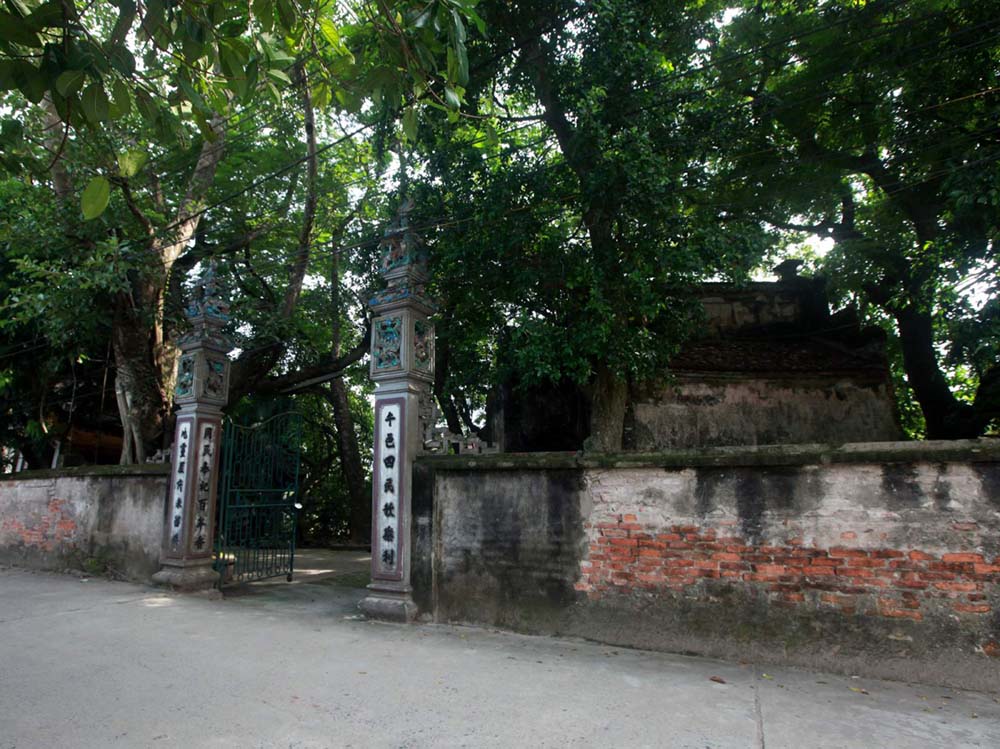
The profession is currently being passed down from generation to generation using the hands-on method.
